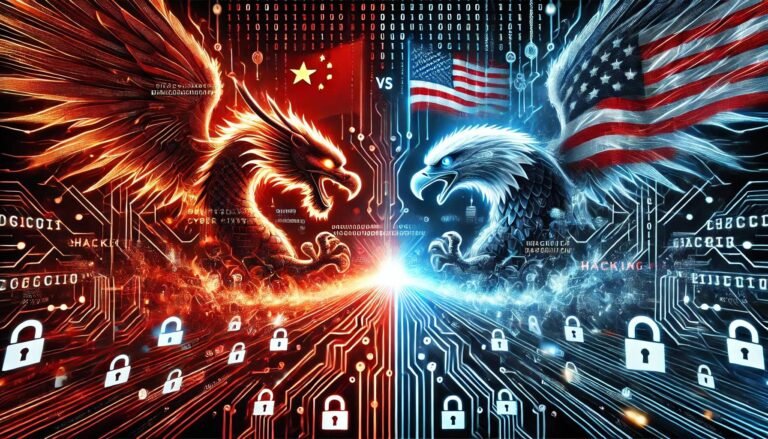Nvidia’s H20 Chip Under Fire: China Alleges Security Backdoor in US-Made AI Hardware
If you follow tech news, you’ve likely seen the headlines: China is accusing Nvidia of building a backdoor into its H20 AI chip, a processor specifically tweaked for the Chinese market. This isn’t just another corporate skirmish; it’s a flashpoint in the ongoing tech rivalry between the US and China—where cutting-edge hardware, national security, and global business ambitions collide.
But what’s really happening here? Are these claims credible, or are they part of a bigger geopolitical chess game? And what does it mean for the future of AI, chip supply chains, and global tech innovation? Let’s dig into the details, separate fact from speculation, and help you make sense of this high-stakes drama.
Why Nvidia’s H20 Chip Matters in the US-China Tech Showdown
First, some quick background: Nvidia is a titan in AI hardware. Its graphics processing units (GPUs) power everything from advanced data centers and gaming rigs to the latest breakthroughs in artificial intelligence.
But in 2022, the US government imposed strict export controls on high-end AI chips, aiming to limit China’s access to technology that could bolster its military or surveillance capabilities. In response, Nvidia crafted the H20—a powerful, but slightly “watered-down” version of its flagship chips, engineered to comply with US rules and still appeal to Chinese customers.
Earlier this month, the US relaxed a ban on H20 sales, opening the door for Nvidia to rekindle business with China. That’s when the controversy erupted.
China’s Explosive Allegations: The “Backdoor” Controversy Explained
What exactly is China alleging?
On Thursday, China’s Cyberspace Administration (CAC) summoned Nvidia to address what it called “serious security issues” with the H20 chip. According to official statements—and widely cited by outlets like Reuters—Chinese regulators claim that US experts have discovered:
- Location tracking capabilities embedded in Nvidia’s chips
- Remote shutdown controls that could disable the hardware from afar
In other words: Chinese officials are raising alarms that the H20 could be used as a digital Trojan horse, giving foreign actors a stealthy way to monitor or disrupt AI infrastructure inside China.
Is there evidence of a deliberate backdoor?
So far, the evidence is thin—at least publicly. The CAC hasn’t specified which “experts” exposed these alleged vulnerabilities, nor have they provided technical details or test results. Nvidia, for its part, has not responded directly to the claims.
Paul Triolo, a noted China tech analyst at the DGA-Albright Stonebridge Group, voiced skepticism, noting that the allegations are “short on specifics” and lack independent verification. This ambiguity leaves plenty of room for speculation—and fuels the narrative that tech security is now inseparable from global politics.
The Bigger Picture: US Export Controls, Chip Smuggling, and Geopolitical Tensions
To really understand what’s at stake, let’s zoom out.
The US Tightens the Reins
Washington’s restrictions on AI chip exports are unprecedented, reflecting a growing anxiety about China’s rapid advances in AI and supercomputing. The logic? Limit access to the world’s best hardware, and you slow down the competition’s technological progress.
However, there’s a catch: enforcing these controls is complex. US lawmakers have even floated requiring location tracking inside every restricted chip—a move that, ironically, aligns with some of the very concerns now raised in China.
China’s Push for Self-Reliance
Meanwhile, Beijing is doubling down on its own ambitions. Officials have quietly urged major Chinese firms to:
- Buy more domestic AI chips—from companies like Huawei, Biren, and Cambricon
- Reduce reliance on foreign tech, especially US hardware
This isn’t just about pride. It’s about national security, economic leverage, and ensuring that China’s AI ambitions don’t get stalled by decisions made in Washington.
Caught in the Middle: Nvidia’s Delicate Balancing Act
For Nvidia, the stakes are massive. China represents a huge market, accounting for up to 20% of Nvidia’s data center revenue in recent years. Losing access would be a serious blow—not just for Nvidia, but for the entire global AI ecosystem.
That’s why CEO Jensen Huang made a high-profile trip to Beijing this month, emphasizing the company’s commitment to Chinese customers and introducing a new, export-compliant AI chip based on its latest Blackwell architecture.
Who Benefits—and Who Loses—From the Backdoor Claims?
Let’s not kid ourselves: accusations of backdoors and security flaws don’t happen in a vacuum. They serve political, economic, and competitive interests on both sides.
Winners
- Chinese chipmakers: This controversy turbocharges Beijing’s push for homegrown alternatives, accelerating adoption of domestic chips.
- Chinese regulators: Asserting control over foreign tech strengthens their negotiating position and signals resolve.
- US national security hawks: The episode validates concerns about tech leakage and could justify even tighter controls.
Losers
- Nvidia: The company faces sales uncertainty, reputational risk, and the threat of deeper exclusion from the world’s fastest-growing AI market.
- Chinese tech giants: Companies hoping to use world-class Nvidia hardware may face delays, disruptions, or forced transitions to less mature domestic chips.
- Global AI innovation: Fragmented supply chains and mutual distrust could slow down technological progress—hurting everyone in the long run.
How Real Are the Security Risks? Untangling Fact from Fear
With so much at stake, it’s worth asking: Are the risks China describes—location tracking and remote shutdown—real technical threats, or more a product of political theater?
What is a “backdoor,” really?
In cybersecurity, a “backdoor” is any hidden feature that allows unauthorized access, typically by bypassing normal authentication. In chips, this could mean anything from secret debug ports to firmware code that responds to covert commands.
It’s not unprecedented for hardware to include remote management capabilities, especially in enterprise-grade devices. But these are usually well-documented for legitimate use—unlike a true backdoor, which is designed for stealth.
Could the H20 contain such a feature?
Anything is possible, but as of this writing, no independent security audit has confirmed the existence of a malicious backdoor in Nvidia’s H20 chip. The claims, so far, seem to rest on the theoretical risk that chips designed under US government constraints might include monitoring or kill-switch functions—possibly at Washington’s insistence.
But here’s the twist: US lawmakers have discussed requiring exactly this kind of tracking for export-controlled chips. The rationale? To prevent smuggling and unlicensed use, especially in adversarial environments.
So, are the chips compromised by design, or is the very act of complying with export laws (by adding tracking features) now itself a security concern in China’s eyes? The answer may hinge as much on politics as on engineering.
The Shadow War for Chip Supply Chains: What’s Next?
Manufacturing Uncertainty for Nvidia
Nvidia has stated that, following the US decision to allow H20 sales, it would take nine months to restart manufacturing and begin deliveries to China. But with the current swirl of allegations, Chinese customers are understandably nervous: what if Washington reverses course again, or if Beijing formally blocks the chip?
This uncertainty casts a shadow over every contract, investment, and R&D decision involving cross-border AI hardware.
The Rise of Domestic Chinese AI Processors
For years, Huawei, Biren, and other upstarts have been racing to catch up to Nvidia’s technical lead. This controversy—and the risk of future export bans—gives them a massive incentive (and captive market) to accelerate their efforts.
Broader Impact on Global Tech
If the US and China continue down this path—each doubting the security of the other’s hardware and software—the result could be a more fragmented, less interoperable global tech landscape. That has implications not just for hardware vendors, but for innovators, researchers, and enterprises everywhere.
Expert Voices: Skepticism and Strategic Calculations
Several experts have weighed in on the likelihood and implications of China’s claims.
- Paul Triolo (DGA-Albright Stonebridge Group): Skeptical about hardware backdoors, noting lack of technical evidence and the context of geopolitical tensions.
- Former US officials and security analysts: Argue that even export-compliant chips like the H20 could accelerate Chinese AI capabilities—posing long-term security risks.
- Chinese AI researchers and policymakers: Divided—some worry that dependence on Nvidia will slow China’s drive for autonomy, others see continued access as indispensable for global competitiveness.
The bottom line? Both superpowers are playing a long game, using every tool—from policy to PR to technical audits—to shape the future of AI and computing.
The Human Element: For Businesses and Everyday Tech Users
If you’re running a Chinese tech company, this situation is more than an abstract policy debate. It affects your tech roadmap, your hiring decisions, and your ability to compete in a rapidly evolving marketplace.
If you’re a consumer or an AI enthusiast, it’s a reminder that the gadgets and services you use every day are built on a foundation of trust—not just in companies, but in entire political and economic systems.
What Should Businesses (and Observers) Do Next?
For companies navigating this uncertainty, consider these practical steps:
- Stay informed: Monitor updates from Nvidia, US and Chinese regulators, and credible technical analysts.
- Diversify supply chains: Don’t bet the farm on a single vendor or jurisdiction—invest in alternative partners and platforms.
- Engage with security audits: Demand transparency and independent validation, whether you’re buying chips or deploying AI solutions.
- Advocate for global standards: The more open and interoperable our systems, the harder it is for politics to derail innovation.
For all of us, this episode underscores the importance of critical thinking—asking not just who benefits from a claim, but how the broader context shapes what’s possible and what’s likely.
Frequently Asked Questions (FAQ)
1. Did Nvidia really build a backdoor into the H20 chip for China?
As of now, there’s no public, independent evidence confirming the existence of a deliberate backdoor in Nvidia’s H20 chip. The Chinese government has raised concerns, but technical details remain undisclosed. Read more on Reuters.
2. Why would a chip include location tracking or remote shutdown features?
Lawmakers in the US have considered requiring such features in export-controlled chips to prevent unauthorized use or smuggling. These functions can help enforce compliance, but they also raise privacy and sovereignty concerns.
3. How will this controversy affect Nvidia’s business in China?
It introduces significant uncertainty. Chinese customers may delay or reconsider purchases, and Nvidia faces reputational risk. If the dispute escalates, Nvidia could lose access to a massive market segment.
4. What’s the impact on China’s domestic chip industry?
Chinese companies like Huawei, Biren, and Cambricon stand to benefit, as regulatory scrutiny of foreign chips encourages local adoption and accelerates R&D investment.
5. Is it safe to use Nvidia hardware in China?
There’s no evidence that consumer Nvidia hardware (like gaming GPUs) is affected. The current controversy focuses on AI/data center chips designed for high-security, large-scale applications.
6. How does this fit into the bigger US-China tech rivalry?
It’s part of an ongoing struggle for technological leadership and national security. Each side seeks to control critical infrastructure, set standards, and limit the other’s influence.
Key Takeaway: Trust, Transparency, and the Future of Global Tech
This latest standoff over Nvidia’s H20 chip isn’t just about one company or one country—it’s a microcosm of the new rules (and risks) shaping global technology. As politics and engineering become more intertwined, trust and transparency matter more than ever.
For innovators, policymakers, and everyday users alike, the challenge is clear: Stay informed, demand evidence, and keep pushing for open, secure, and ethical technology—no matter where you are on the map.
Want to stay ahead of the next big story in AI and tech policy? Subscribe to our newsletter, or check out our deep dives on the global chip wars and emerging AI standards.
Discover more at InnoVirtuoso.com
I would love some feedback on my writing so if you have any, please don’t hesitate to leave a comment around here or in any platforms that is convenient for you.
For more on tech and other topics, explore InnoVirtuoso.com anytime. Subscribe to my newsletter and join our growing community—we’ll create something magical together. I promise, it’ll never be boring!
Stay updated with the latest news—subscribe to our newsletter today!
Thank you all—wishing you an amazing day ahead!
Read more related Articles at InnoVirtuoso
- How to Completely Turn Off Google AI on Your Android Phone
- The Best AI Jokes of the Month: February Edition
- Introducing SpoofDPI: Bypassing Deep Packet Inspection
- Getting Started with shadps4: Your Guide to the PlayStation 4 Emulator
- Sophos Pricing in 2025: A Guide to Intercept X Endpoint Protection
- The Essential Requirements for Augmented Reality: A Comprehensive Guide
- Harvard: A Legacy of Achievements and a Path Towards the Future
- Unlocking the Secrets of Prompt Engineering: 5 Must-Read Books That Will Revolutionize You







